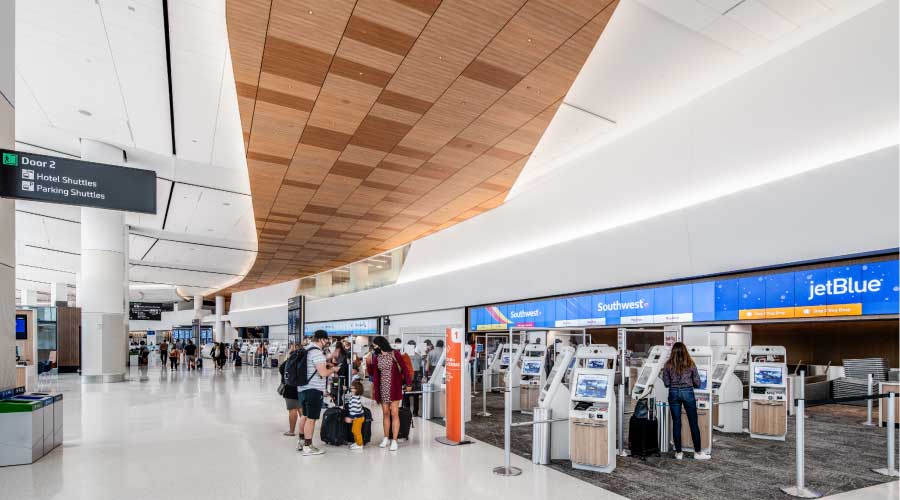LEED-EBOM Certifications Outpacing LEED-New Construction
LEED-certified existing buildings are outpacing new construction, according to the U.S. Green Building Council (USGBC). As of December, square footage of LEED-certified existing buildings surpassed LEED-certified new construction by 15 million square feet on a cumulative basis.
"The U.S. is home to more than 60 billion square feet of existing commercial buildings, and we know that most of those buildings are energy guzzlers and water sieves," said Rick Fedrizzi, President, CEO & Founding Chair, USGBC. "Greening these buildings takes hands-on work, creating precious jobs especially for construction workers. Making these existing buildings energy and water efficient has an enormous positive impact on the building's cost of operations. And the indoor air quality improvements that go with less toxic cleaning solutions and better filtration create healthier places to live, work and learn."
Historically, USGBC has seen the stock of LEED-certified green projects overwhelmingly made up of new construction projects, both in volume and square footage. That began to change in 2008, when the LEED for Existing Buildings: Operations & Maintenance (LEED-EBOM) rating system began experiencing explosive growth. In 2009, projects certified under LEED-EBOM surpassed those certified under its new construction counterpart on an annual basis, a trend that continued in 2010 and 2011.
Projects worldwide are proving that green building doesn't have to mean building new. By undertaking a large renovation, the recently LEED-certified Empire State Building has predicted it will slash energy consumption by more than 38 percent, saving $4.4 million in energy costs annually. The second tallest building in the world, Taipei 101, earned the tallest honor — LEED Platinum. The skyscraper was designed to use 30 percent less energy, reducing annual utility costs by $700,000 a year. San Francisco's Transamerica Pyramid also earned LEED Platinum as an existing building, 39 years after it was originally built.
The landmark's onsite co-generation plant saves an average of $700,000 annually in energy costs.
In its Green Outlook 2011 report, McGraw Hill Construction found that by 2015, the green share of the largest commercial retrofit and renovation activity will more than triple, growing to 25 percent to 33 percent of the activity by value, a $14 to $18 billion opportunity in major construction projects alone.
— Greg Zimmerman, executive editor
briefings
Energy Efficiency On-bill
According to a new study by the American Council for an Energy-Efficient Economy (ACEEE), on-bill financing — or paying for energy efficiency investments through utility bills — is becoming more widely available across the country and, therefore, more organizations are participating.
The study — On-Bill Financing for Energy Efficiency Improvements: A Review of Current Program Challenges, Opportunities and Best Practices — profiles 19 existing on-bill financing programs in 15 states.
Energy efficiency loan programs are a low-risk investment, according to ACEEE, and default rates for on-bill financing are less than 2 percent. That's because there's evidence to suggest that utility customers tend to prioritize the payment of utility bills.
In many cases, energy savings from upgrades are sufficient to cover the monthly financing on the utility bill, says ACEEE. In those cases, the monthly total is less than or equal to the pre-investment utility bill.
For more information about on-bill financing, and to read the ACEEE study, visit www.aceee.org.
Best Green Schools
The U.S. Green Building Council's Center for Green Schools announced its inaugural Best of Green Schools 2011 list, recognizing school administrators and government leaders in 10 categories for their efforts to create sustainable learning environments. Highlights include:
Region — Sacramento area: Mayor Kevin Johnson has led the charge to bring together mayors and superintendents from across the Northern California region to create a $100 million revolving loan fund for green school retrofits.
State — Ohio: With 315 LEED registered and certified projects, including 19 schools registered in 2011, Ohio leads the nation with more green school projects underway than any other state.
City — Philadelphia: The School District of Philadelphia made significant steps in 2011 toward greening the city's 291 public school buildings.
School — Lake Mills Middle School (Lake Mills, Wis.): In March 2011, Lake Mills Middle School became the first public school in the nation to achieve LEED Platinum certification.
DOE Updates Energy Standard
Following preliminary analysis that ASHRAE/IES's 2010 energy efficiency standard contains significant energy savings over the 2007 standard — 18.2 percent source energy savings and 18.5 site energy savings — the U.S. Department of Energy has issued a ruling that establishes the 2010 standard as the commercial building reference standard for state building energy codes.
With the ruling, Standard 90.1-2010 serves as the commercial building reference standard for state building energy codes under the federal Energy Conservation and Production Act. As a result, states are required to certify by Oct. 18, 2013, that they have updated the provisions of their commercial building code regarding energy efficiency to meet or exceed 90.1-2010.
Related Topics:














